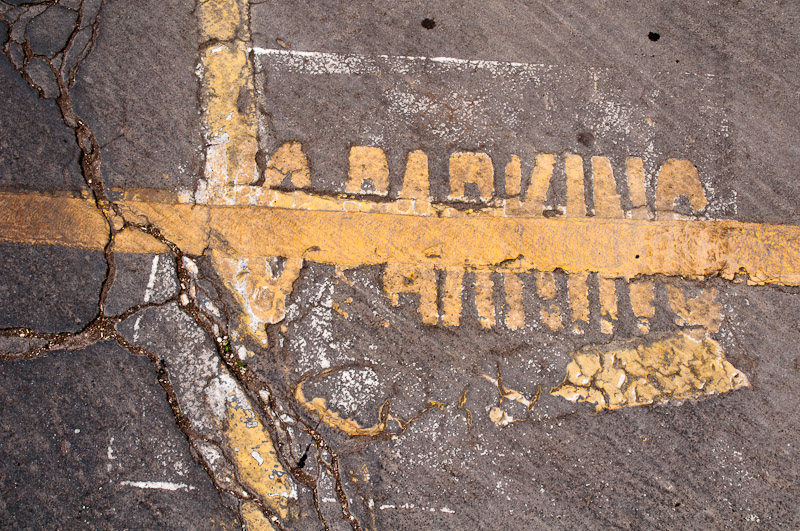Alternative Landscape

How many times must you be told, Taos
While some clouds did gather over the mountains this afternoon, offering hope for the days to come, there was no storm development and no rain to clean the sky of smoke haze from the distant South Fork Fire. So again, I have no photographs of sweeping New Mexico landscapes or dramatic storm skies to offer but that’s not an altogether bad thing. Instead of looking to the horizon I must instead find smaller landscapes at my feet, ones that I might have overlooked if weather and wildfire had not intervened.
The physical geography of our street surfaces read much like that of our broader countryside. The weather produces the same fractal patterns in miniature on the tarmac that you find in grand scale in satellite views of the canyons of the Colorado and the deltas of the Mississippi. As with all contemporary landscapes, the natural patterns of earth movement and erosion are modified and overlaid with a human archeology of changing population and politics. Three times or more this road has been painted and repainted with rephrased parking restrictions but each has been eroded by weather, time and the growing indifference of those for whom the message was intended.
As I walked away from this spot, Neil Young’s “After the Gold Rush” found it’s way out of the door of a nearby bar: “Look at Mother Nature on the run in the 1970s” he sang. Apparently, live versions of the lyric have been updated over the decades just as these yellow lines have been repainted; now the words have settled at “Look at Mother Nature on the run in the 21st century” which should last a little longer than the previous three versions. Mother Nature is still on the run, especially today in the Golf of Mexico, and we still don’t get her message. Perhaps the best we can console ourselves with is that ultimately she will give up on warnings and just throw us off; the fractal cracks and weeds will erase us and new dinosaurs will arise to the throne to take our place.



